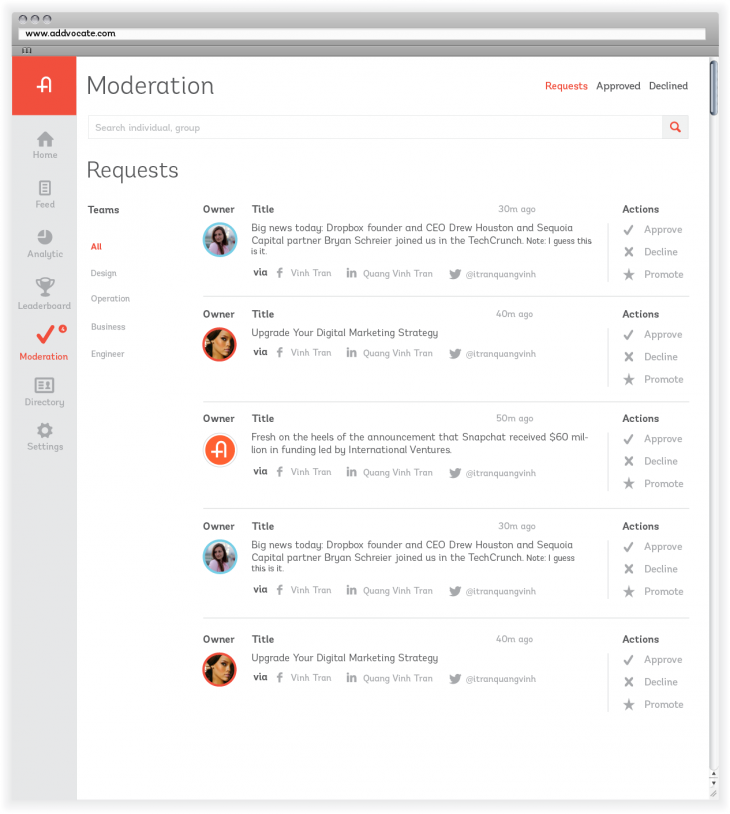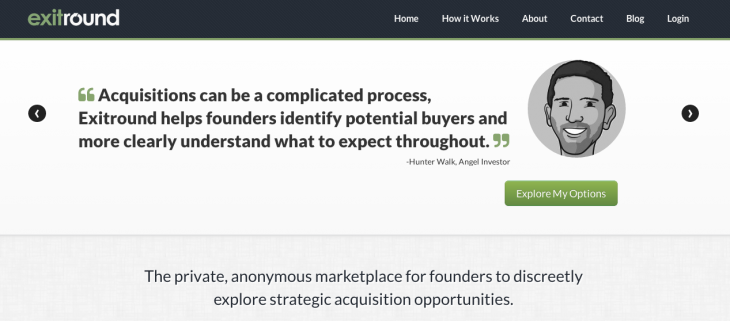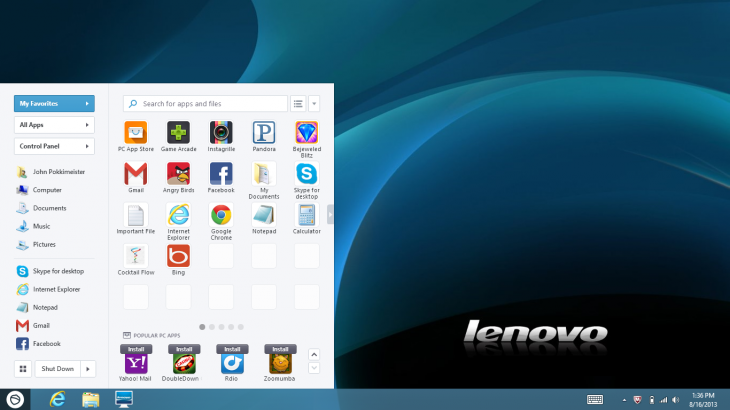
Welcome to 2014, a brand new year to look forward to and you know what this means, another list about tech companies. This time we look at another batch West Coast startups that we believe could be big news in the next twelve months. The names on this list are not constrained to just Silicon Valley — they can be based in any part of the region, including Seattle, Portland, and Los Angeles.
Practically every day, a new company sprouts up to tackle one of countless problems and while some hold promise, it’s impossible for us to list them all. We’ve tried to focus on the few that cover a variety of industries, including those that are doing something really cool, whether it’s in healthcare, 3D motion control, enterprise computing, or even those focused on behind-the-scenes services.
Here are our picks for 2014, presented in no particular order. These aren’t all necessarily brand new companies, but ones we think will make a significant breakthroughs in 2014. If you want to look at our list from 2013, you can view it here.
Prismatic
A company that has been around for a bit, it was only this past year when Prismatic actually launched its official mobile app. Yes, it did have an iOS app already, but it was only a “proof of concept” service at the time. Now, two years later, the company is beginning to put its technology to the test.
Prismatic’s CEO Bradford Cross told us in December that the new version of the app is centered around helping discover content relevant to what users are interested in. Previously, its app was focused on being an RSS reader. Now, it blends content from social media with a more traditional Google Reader-style approach. The premise is that users will automatically be provided content that suits their interests, no matter the publication or source.
What makes this company worth paying attention to is the potential for it to apply its recommendation algorithm to other areas and services, including advertising, mobile app recommendations, and anything else. We could also see Prismatic evolve its offering so that it no longer just aggregates text-based content, but also videos and product listings. So far, it has curated more than 5 million stories each day and features more than 10,000 interest topics.
Glow
The latest startup from PayPal co-founder Max Levchin, Glow aims to improve the healthcare industry in the United States. Its first investment is geared towards enhancing the rate in which women become pregnant — that is, the company wants to increase the chances of getting pregnant without resorting to fertility treatments, which can be rather costly and not covered by insurance.
Part of Glow’s success is compliance with the technology regiment. Levchin believes that if a couple follows the instructions in its app and inputs the required information, there could be a high rate of success. However, there’s no guarantee that Glow will generate pregnancies for 100 percent of its users.
Therefore, the company has implemented a crowdsourced pool of money, called the Glow First program, where women put in $50 per month for up to 10 months. The idea is that after 10 months, those participants who are unsuccessful at getting pregnant will receive a portion of the funds to pay for fertility treatments. Levchin has put his money where his mouth is, so to speak, and contributed $1 million of his personal funds towards the program.
Relying on data to help provide users with the optimal time and day to try and get pregnant, Glow has integrated with MyFitnessPal. Over the next twelve months, it will be interesting to see if other services will be added and if the company decides to branch out into other areas in the healthcare space in an attempt to reduce costs for consumers.
➤ Glow
Leap Motion
Leap Motion is a company specializing in 3D motion control technology along with developing new ways to utilize its gesture controller in the design and prototype process. In 2013, it raised $25 million from Highland Capital Partners and began opening up resources for developers to help support its product. So far, the company tells us that its SDK has been downloaded more than 85,000 times from over 100 countries.
Late last year, Leap Motion launched a new app called Freeform in its Airspace app marketplace that brings a Play-Doh-like effect to creating 3D objects.
In the coming year, it will be worth looking at the company to see if it implements its next-generation tracking system and opens itself up to all developers. Additionally, is 2014 also going to be the year when Leap Motion expands beyond its hardware device and HP Envy 17 laptop integration to bring its technology to mobile devices like smartphones and tablets?
Addvocate
Not every interesting company is going to be concentrating on consumer needs. For our first enterprise-focused startup on the list, we chose Addvocate, an employee advocate platform that enables workers to evangelize on behalf of their employers. In 2013, it has raised a $2 million Series A round led by Rogers Venture Partners and also hired former Oracle Vice President of Strategic Business Development Piers Cooper as its Chief Operating Officer.
Led by Salesforce’s former head of social media Marcus Nelson, Addvocate has managed to make some significant moves in its early days as a startup. It has integrated with the Salesforce1 platform and has launched an iOS app to allow employees to continue to manage a company’s social account from beyond their personal computer.
Addvocate has more than 600 global companies on its user list today, including ExactTarget (now a part of Salesforce’s Marketing Cloud), VerticalResponse, and BazaarVoice.
It will be interesting to see Addvocate evolves in 2014 to be better tied into CRM platforms and even into entire company systems, as this employee advocacy service doesn’t appear to be one that should be operated as a standalone product.
Cloudflare
Cloudflare has certainly been busy in 2013 and looks to take on more challenges in this year. The company specializes in providing filtered traffic to its customers. It aggregates all of the traffic going to one of its customer sites and filters out those coming from crawlers, bots, and potential attackers.
In April, the WordPress blogging platform experienced a severe brute force attack. Cloudflare said that it managed to block 60 million requests against its WordPress customers in a single hour. This wasn’t the only instance of a cyber attack in 2013 and there’s no doubt that more sites will be targeted in the future.
To date, the company says that its service powers roughly 3 percent of Web requests and CEO Matthew Prince hopes to increase that amount. On Thursday, Cloudflare announced that it will be expanding its data center facilities globally, along with giving developers more control over its platform and extending SSL “with perfect forward secrecy support” to all users.
Cloudflare will be bringing its data centers to Latin America, the Middle East, Africa, and parts of Asia. Developers will soon be able to gain access to the company’s platform through its RESTful API.
Medium
Medium launched as the latest brainchild of Twitter co-founder Ev Williams and sought to change the way how content is read. Instead of being just another blogging platform like Posterous, Tumblr, Svbtle, and WordPress, Medium sought to separate itself by being wholly dedicated to be about quality writing.
In 2013, the publishing service made its first acquisition, picking up Kickstarter-funded Matter. It also finally opened itself up to the general public, but still requires users to have a Twitter account to join. How many users are actively posting to the platform remains a mystery and how it will continue to stack up against competitors could be interesting.
The matter about revenue is also something that could be answered this year, but most likely the company could spend the time improving its iOS and Android apps to help users easily generate content for the service. It has also been reported that the company is considering raising $20 million in venture capital.
➤ Medium
Circa
We all live rather busy lives and being able to keep track of the important news items out there can be rather time-consuming. Circa is trying to solve this problem, but from a mobile-first perspective. It seems that the company has found a way to help users consume the news they want, in an efficient manner, and on a device that they’ll always have on them.
In the past twelve months, Circa has launched an Android app and formally established an editorial team by hiring Anthony De Rosa, the former Social Media Editor for Reuters, as its Editor in Chief to “push the boundaries” of the content it displays. He’s now working alongside the company’s Director of News, David Cohn, and 11 contributing editors.
Needless to say, Circa will be releasing more updates this year, but will there be a significant upgrade that will further change how we consume the news? Already people flock to Twitter, Flipboard, and outlets like the Washington Post, New York Times, Wall Street Journal, and others for insights, but what lies ahead for Circa? It could be assumed that additional categories will be added, the workflow may be further improved, and more ways to share content could be added.
➤ Circa
Watsi
Watsi first caught industry attention thanks to its entry into the Y Combinator accelerator as its first non-profit startup. Started by Chase Adam, this organization functions like Kickstarter, but for the purposes of helping those less fortunate to receive medical care that they desperately need. Donors can pledge as little as $5 to help fund life-changing medical treatments.
The mission of the startup is so compelling that YC partner Paul Graham joined its board of directors in April 2013. It’s the only time he has opted to be a member of a company’s board.
During YC’s Demo Day, Adam made it clear that he wasn’t looking for investment from venture capitalists. Instead, he was soliciting donations to its organization to benefit patients. As 2013 closed out, it received $1.5 million from gaming startup Humble Bundle, an amount that will go to help 2,000 people.
Hopefully in 2014, the organization will continue to see a continued influx of donations to help save someone’s life.
➤ Watsi
Kiip
One of the main ways online businesses monetize their services is through advertising. But when it comes to mobile apps, simply inserting Google AdWords isn’t going to cut it. Users have trained themselves to ignore these ad formats, so what’s the right way to reach them? When it comes to games, this becomes especially difficult.
Kiip is solving this with its mobile rewards and advertising platform. It has integrated itself with over 1,500 apps to target users by specific “moments”. Last year, the company launched its Precision Moments Targeting product to enable ads to be displayed based on specific demographics, location, historical redemption patterns, and verticals such as gaming, fitness, health, productivity, and more.
The mobile ad industry is starting to pay attention to the startup as well. Market research and analytics firm comScore now uses Kiip data in its reports.
2013 saw the company expand to Japan, partnering with Ponta and Yahoo Japan. This year will probably see Kiip support more markets, although it hasn’t specified where it will go next. Additional partnerships are most likely assured as well.
➤ Kiip
Anki Drive
Anki Drive makes our list mostly because its AI-controlled cars are a great deal of fun to play with. But while you might think it can be boring making laps around a single track, it’s the software behind the vehicles that make it so entertaining. Instead of a physical remote control, players navigate their cars using the iOS app.
Having been on the market for just a couple of months, Anki Drive is receiving praise across social media for the amount of enjoyment players are having. This week, the company released an update that makes racing a more “strategic” sport with the addition of new weapons and upgrades. Players can customize each vehicle as they see fit to do battle against their opponents, whether it be human or computer-controlled.
This year, the company says that it will be working on bringing Anki Drive to other countries — currently it’s only available in the US and Canada. Additionally, an Android version of its app may also be released.
Inside.com
Inside.com is the latest startup to be founded by serial entrepreneur and angel investor Jason Calacanis. Currently, at most 100 people have access to the stealthy startup. It’s believed that the company has received an investment of “millions of dollars”.
We know that it will be a mobile app, which Calacanis predicts will be “the largest content site in the world, eventually beating Wikipedia 10 years from now.” The service will leverage the technology and learnings taken from two companies he’s run in the past, Mahalo and Weblogs.
Originally it was believed that Inside.com would make its debut in 2012, but looks like 2014 will be the year. Word leaked this week that the company has hired Gabriel Snyder, the former editor of The Wire, Gawker, and Newsweek. Calacanis noted the news in a tweet saying:
Ugh…. @inside details starting to leak before 23rd launch. Scrambling around to close up leaks!
— jason (@Jason) January 9, 2014
Nest
Nest makes its second consecutive appearance on this list as it’s had an interesting 2013 and has already shown that it’s going to have some news this year. Known originally for its smart thermostat, the company has expanded its product line to tackle smoke and carbon monoxide in the home with the launch of Nest Protect.
The company has also begun offering its products in more markets. In November, the Nest Protect became available in the UK, the first country outside of North America. Previously, the devices could be purchased only in the US and Canada.
As we began 2014, news broke that Nest is in the process of raising a new round of funding. Re/code reported that the company is looking to raise “upward of $150 million” in a deal that would value it at more than $2 billion. If the Internet of Things trend continues, Nest will play an important role in this market, and we could see it expanding to other markets and verticals.
➤ Nest
Coin
As a physical card meant to replace your wallet, Coin is in a crowded marketplace as it competes against the likes of Square Wallet, Google Wallet, PayPal, and, to some, even Apple’s Passbook. So what makes it so special? Perhaps that it generated interest from potential consumers before launching.
In November, the team behind it launched a crowdfunding campaign to raise $50,000. If you contributed, you were able to purchase a device for 50 percent off the $100 RRP while receiving an additional $5 for every friend you refer.
The company says that Coin won’t be shipping until this summer so it will be worth looking at to see if it holds up its promise. It has a lot to prove, especially since there are some that think it’s a bad idea. It’s great that it has some support from early adopters, but what about the mainstream public who go to Starbucks, grocery stores, shopping malls, and other places where they frequently use credit cards — will they be so supportive? And will retailers also understand what the technology is?
➤ Coin
HelloSociety
There’s no denying that Pinterest has become a hotbed of activity that brands are eager to find new ways of marketing on. HelloSociety is a Los Angeles-based startup that is helping achieve this, thanks to its suite of tools that include analytics, partnerships, a campaign creator, and more.
In 2013, Pinterest announced that it would be launching an advertising revenue model with its promoted pins experiment. Not all the details have been revealed yet, but the company is looking for ways to make sure any ads appear “tasteful, transparent, and relevant” to its users.
Once Pinterest begins to monetize itself and increases the opportunities brands have to engage with its users, there could be more demand for third-party services like HelloSociety to lend its tools and resources. HelloSociety has already helped run more than 700 Pinterest campaigns, including for HauteLook, One Kings Lane, BeachMint, Jack Threads, Homes.com, and Gifts.com. It has over 3 million signups for its service.
ExitRound
ExitRound launched in 2013 as a marketplace where startups can go to discuss potential acquisitions. Just like AngelList is designed to help entrepreneurs raise funding, ExitRound is focused on… well, the exit.
Company co-founder and former Shasta Ventures senior associate Jacob Mullins said in March that the service his firm is providing is just like what venture capitalists “do on a normal basis — connect portfolio companies to potential acquirers.” The twist is that this process isn’t happening in the seed market.
Part of ExitRound’s success is its blind date approach — founders can advertise their acquisition intents anonymously through the site. As described on TechCrunch:
So an entrepreneur can go to the Exitround site and fill out a short application outlining the basic details of the team and of what they’re looking for in an acquisition. Mullins said Exitround vets all the applications in order to make sure there are only high quality teams in the marketplace. If they get approved, they’re asked to provide more information, which is then anonymized and presented to potential buyers — so Google can decide whether it’s interested in, say, a team of three with specific areas of technical expertise, but they shouldn’t have enough information to figure out what the specific company is.
ExitRound has more than 200 buyers signed up to its service and hit a milestone this summer: it announced its first exit. In 2014, hopefully we’ll see continued growth from ExitRound as it begins to help connect startups with acquirers and share more exit stories.
Boxbee
Boxbee launched in the middle of last year as a service to allow consumers to store goods in its lockers. It was named one of the winners of the LAUNCH Festival in San Francisco for its Uber-like capabilities for physical goods. Once users sign up, they can use the app to select how many boxes they want picked up and stored in Boxbee’s facilities. Then, a vehicle will pick the boxes up and haul them away.
The service has launched in San Francisco and New York City, which appear to be ideal markets since residents of both cities frequently lack the necessary storage space and often don’t have a car or truck to help move their stuff when they want to store it elsewhere.
What makes Boxbee interesting is its potential growth opportunities, including to other markets such as Philadelphia, Seattle, Chicago, or perhaps Honolulu. To date, the company says that it has had more than 4,100 items placed in storage.
At the end of 2013, it launched a new feature to help users find good use for their unused items while also making money from them. With its sharing library, users can post their inventory on the site to invite their friends to check it out and rent them.
➤ Boxbee
SweetLabs
The makers of the alternative app marketplace Pokki, SweetLabs is seeing some adoption in helping bring mobile apps to people’s desktops.
In case you’re not familiar, its main product Pokki originally enabled Windows devices to feature their own app marketplaces. With Google Chromebooks offering this same feature, Windows was lagging behind until Windows 8 was released.
Pokki brings all the apps that you use on mobile into a single hub. To date, it has more been downloaded more than 50 million times and this week branched off to its second operating system: Android. The company has formed strategic partnerships with Acer and also Lenovo to help improve its adoption rate.
Jelly
Since Twitter co-founder Biz Stone left the company he started with Evan Williams and Jack Dorsey, he and Ben Finkel have been working on a new endeavor and it launched this week. Called Jelly, it’s a mobile app that functions akin to a Q&A service and crowdsources the answers by using your social graph.
For much of 2013, Jelly had been in stealth mode. However, prior to launch, we did find out that it raised a Series A round of funding led by Spark Capital with participation from SV Angel, Bono, Al Gore, and both Williams and Dorsey. It also hired away Kevin Thau from Twitter, where he oversaw the launch of the company’s #Music service.
While some may think of Jelly as being like Quora or Klout’s Cinch, it’s different — it uses photos to encourage users to respond. Rather than having a text-only query, Jelly wants you to snap a photo of what you’re looking at in order to properly convey what it is you’re confused about. It could be a book, scenery, an animal, or just a screenshot. The service looks to leverage the adage “a picture is worth a thousand words.”
It will be worth looking to see how well the mobile app does this year. Some pundits have shrugged off the service while others feel it depends on how people use it.
➤ Jelly
Quip
Quip is the latest startup from Bret Taylor, the founder of FriendFeed and the former Chief Technology Officer at Facebook. Along with ex-Googler Kevin Gibbs, he has created a product aimed at reinventing office documents and productivity. It’s not another to-do list service or a calendar, but a direct challenge to Microsoft Office and Google Docs.
Tackling word processing is Quip’s first foray. Leveraging the cloud, users can create and edit documents using iOS and Android apps and share them with friends and co-workers to make edits or further collaborations.
The service is available both in the US and in Europe. And it’s still making improvements to the overall experience. In November, Quip released new features including allowing files to be imported into the app, pulling from Microsoft Word, Evernote, and Dropbox.
Will we see additional features being added in 2014 or perhaps Quip launching on Windows Phone devices? Or will the company begin to tackle other areas such as spreadsheets and presentations?
➤ Quip
Echo
Formerly known as JS-Kit, Echo is a real-time Web platform that enables brands to consolidate all the conversation about them into a central area. It is being used by companies like ABC, AMC Networks, ESPN, NBC News, NASDAQ, Sony, The Washington Post, USA Network, and the WWE.
This year, the company announced that there are more than 85 billion API calls being made to its servers. In the last stats provided, Echo’s platform served 4.3 billion real-time streams in November and it touts that number has increased dramatically in the fourth quarter of 2013.
In a time when the marketplace has been saturated by the likes of Livefyre, Mass Relevance, Chute, and other platforms, Echo has also opened itself up to developers to create apps built off of its service — in March, it released a JavaScript SDK to assist in the development of social apps for TV, music, news, and other market segments.
Echo places on our list because as more consumers begin to post updates on Facebook, Twitter, Google+, Instagram, and on their blogs, brands will need new ways to capture these “conversations” so that they can actively engage with them.
➤ Echo
Photo credit: HELENE LABRIET-GROSS/AFP/Getty Images
Get the TNW newsletter
Get the most important tech news in your inbox each week.
























